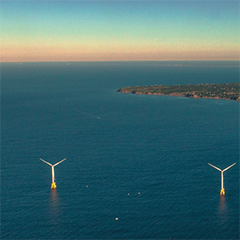What once seemed like a pipedream has become reality. Offshore wind projects worldwide have increased in number, and are now becoming more of the norm. What has not gone away is the citizen opposition to wind farms, which now has spread to offshore projects worldwide. Recent studies on global offshore wind show strong growth. If the headwinds of opposition can be tampered on projects, more and more will gain approval and go online. Opponents seem confident about slowing projects down, and are coming from all areas and vantage points with their vocal opposition.
Take for example the Atlantic sea scallop. For the northern Atlantic area of the United States, there is an area called the New York Bight, which contains hundreds of millions of dollars of fish, of which around 80% are scallops. Fisherman in this area are cautious, however early stakeholder outreach can yield positive results. Opposition also to the cables going onshore with power have felt their presence in Happisburgh, with the Norfolk Vanguard project off the coast of England. This is the second project in three years that is in need of land to run cables through, and some residents are banding together to stop this.
In the Great Lakes area of the U.S., Murray Energy Coal is funding opposition to an offshore wind farm there. Japan is struggling to build offshore wind due to the powerful fishing lobby there. The ‘Star of the South’ offshore wind farm project in Port Albert, Australia is delayed, and the local maritime union is blaming it on opposition from the federal government that opposes renewables. Zero Carbon Marine believes they will build a large offshore wind farm in the Bristol Channel; however, opposition does await.
As we can see, opposition can come from fossil fuel competitors, fisherman, those who live near the view shed of turbines in the water, and numerous other areas. The opposition has a goal to stop a project, however many know that by simply delaying offshore wind projects, it could cause companies to reconsider or just slow their growth. Stalling has become the number two desire of wind opponents, after stopping. Numerous tactics can ease the entitlement of offshore wind if companies have an organized plan to promote their project, and not just counter opponents.






























